5 Thoracic Spine Stretching Techniques to Reduce Shoulder Pain
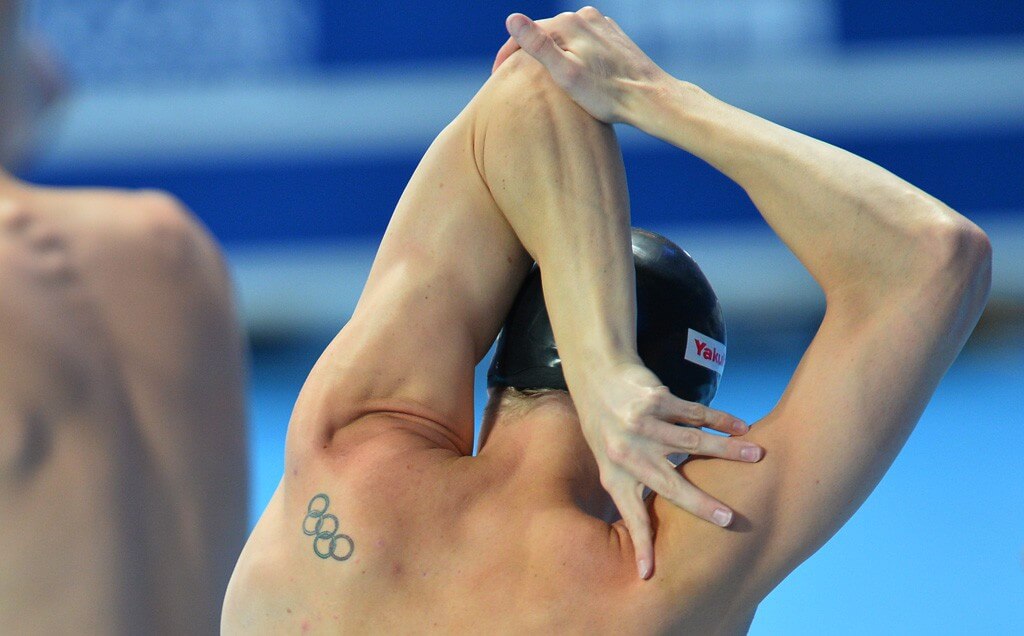
Mac Robertson, Swimming World College Intern.
Shoulder injuries seem to be commonplace throughout a swimmer’s career and can inhibit phenomenal swimmers from ever reaching their physical potential. Some even have to permanently leave the sport. Most coaches and athletes are not well-versed in proper stretching techniques that could prevent injury, and combating their soreness and pain can be confusing and seen as a hassle.
Contrary to popular belief, shoulder injuries are not always the result of overuse. Most of the time, shoulder pain is linked to the range of motion in the thoracic spine.
The thoracic spine consists of 12 vertebral segments that run from the base of the neck down to the abdomen. Most people lose thoracic spine mobility due to a sedentary posture or poor body mechanics. This poor posture transfers to the water as well. If you are hunched over as you travel through the water, you are unable to reach as far and maximize the pull of each stroke.
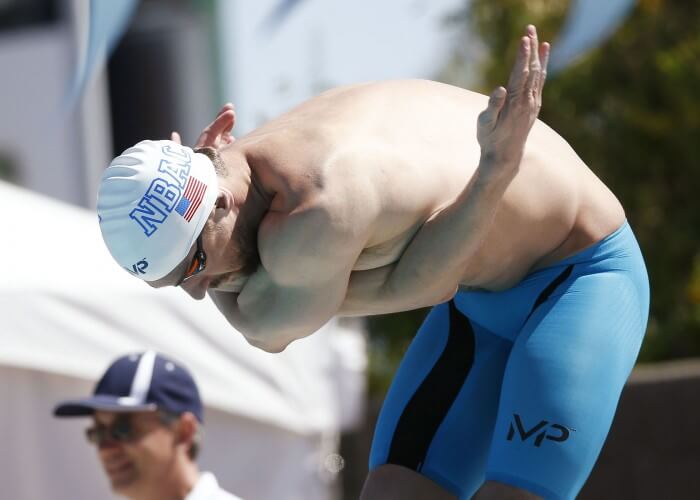
Photo Courtesy: Arizona Republic-USA TODAY Sports
Dr. John Rusin, a physical therapist and leader in studying pain-free athletic performance, has completed research linking shoulder pain to the thoracic spine. Most people lose thoracic spine mobility from sitting down for most of the day or from using other muscles to overcompensate for its weakness. The joints above and below – the scapula and lumbar vertebrae – must become more mobile and less stable. This extra stress can lead to even more pain and joint instability.
If the thoracic spine is stiff and unable to move with ease, then the body cannot rotate very well. This stiffness forces a swimmer to work harder at rotating, so the shoulders begin working harder. Eventually, the shoulders become tired and sore, which can lead to injury.
Most soreness and pain stem from a lack of stability, mobility or even motor control. Because of this, stretching has become a major point of emphasis for elite swimmers to reduce injuries in the water. Swimmers like Michael Phelps spend up to 30 minutes on stretching prior to warming up. Using the correct stretches will ensure the best injury prevention.
Both the spine and shoulders must move as one unit to endure tortuous training loads. Luckily, there are several simple techniques that can be done quickly throughout a day that will increase the flexibility and range of motion of your thoracic spine.
1. Practice Good Posture
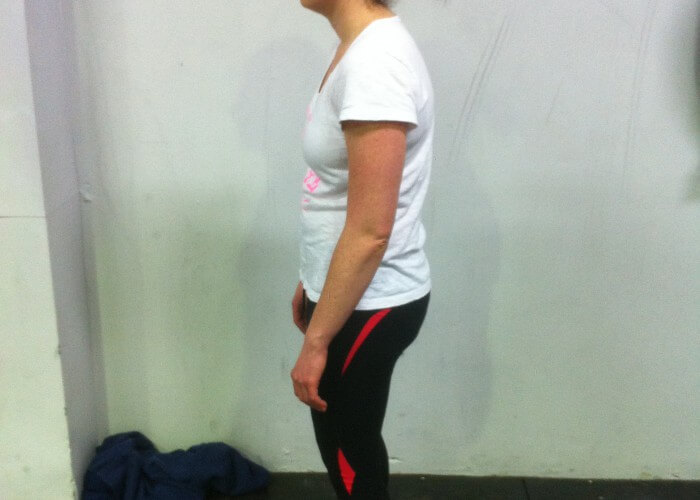
Many people display bad posture throughout the course of the day. Whether you are sitting on your phone or computer, most people are usually hunched in the back with shoulders rolled forward. This results in a stiff spine and weak back and shoulder muscles. Straighten your spine and roll your shoulders back. Taking time to correct your posture throughout the day is one simple way to reduce mid-back tightness and increase thoracic spine mobility.
2. Side Stretch

Photo Courtesy: Delly Carr / Swimming Australia Ltd.
Lift both arms over your head while maintaining a straight back. Then, move side to side at the hip. This stretch targets your latissimus dorsi muscle while also bending your spine. By stretching out your lats, you can decrease muscle knots while extending your natural range of motion.
3. Rotational Stretch

Photo Courtesy: Taylor Brien
This simple technique can be done best while sitting in a chair. Once sitting down, twist your body around as if to look behind you while maintaining an erect back and proper shoulder positioning. Again, this will help open up your muscles as well as extend your spine to increase its mobility.
4. Cat-Cow Stretch
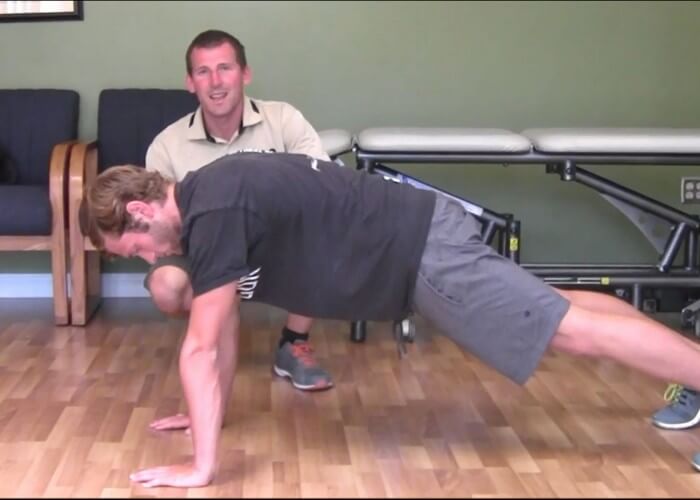
Photo Courtesy: SwimmingWorld.TV/Center for Optimal Restoration
This stretch requires you to get in a four-point stance on your hands and knees. You should then proceed to round your back to extend the spine (like a cat), then flatten your back out again (like a cow). Moving through these two extensions will help increase your mobility when you dive into the water. Attending a simple yoga class can help you improve these stretching techniques.
5. Foam Roller Exercises
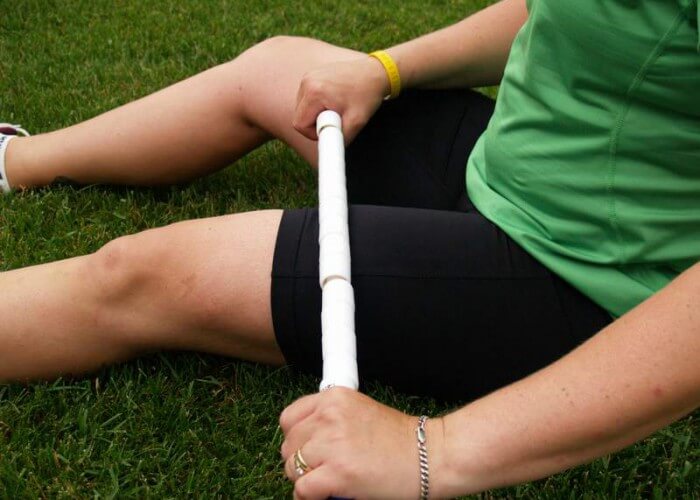
Photo Courtesy:
One last technique to extend the thoracic spine is through the use of a foam roller. Place the foam roller perpendicular to your body underneath your back. This will extend your back over the roller and stretch your spine to its potential, which will increase your range of motion and flexibility.
By following each of these simple techniques, you should be able to increase the mobility of your thoracic spine and shoulders. This mobility will allow each arm to extend further and your body to rotate much easier in the water. The extra extension and easier rotation should also increase swimming efficiency, which will greatly enhance your performance.
Shoulder injuries are no fun to deal with. Targeting the correct areas of your body to stretch should help you stay in the water and continue swimming your fastest!
All commentaries are the opinion of the author and do not necessarily reflect the views of Swimming World Magazine nor its staff.




Bailey Menkedick
Ron Rasque, LeeAnne Thorson Schwan, AMA nda Anne Katsma, AMA nda Manock, Ben Thorud, Gretchen Benjamin, Shelly Sabourin, Bethanne GetMovin, Danniela Neher
Jacob Evans
Chance Keeney
Helena McGrath
Olivia Pulham
Dylan
Chesleigh Marc Leeee
Tommy Lareau
Too bad the visuals do not coincide or even show what the article reads. However, there is a lot of good info on stretching on the internet.
Ethan
Noam Laloya